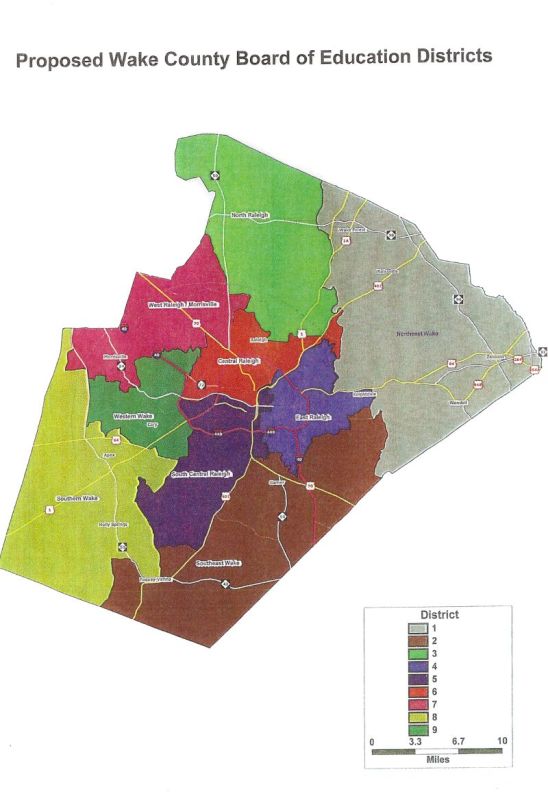The Wake County school board is one step closer to redistricting for this fall’s election.
The Shanahan Law Group is drawing up the new board member district maps, and presented a draft to the school board this week.
The U.S. Constitution requires redistricting every 10 years after the census. Districts within each governing body should be more or less equal with a 5-percent deviation up or down.
Wake County’s huge population growth during the last decade posed a challenge for the law firm. The number of residents in the county flew from 627,846 in the year 2000 to 900,993 in 2010 — an increase of 43.5 percent.
With nine districts, the Wake County Board of Education should have districts of about 100,000 people each.
The consultants presented a map that keeps the deviation in each district to no more than 1 percent by taking constituents from booming Districts 1, 2, 3, 7 and 8 and giving voters to Districts 4, 5, 6, and 9. The map splits seven voter precincts, a move that affects all districts.
Other board-mandated criteria that the law firm followed include keeping each district as compact as possible, respecting municipality boundaries and not taking board incumbents out of their districts.
One criterion adopted by the board Feb. 15 but not directly addressed by the board Tuesday was to “consider redistricting plans that would increase minority representation on the Board.”
Tedesco, well known as a principal proponent of killing the old socioeconomic diversity policy, questioned whether the new map “diluted” or “packed” minority representation in districts.
“Each district pretty much retained its characteristics,” said Kieran Shanahan, principal attorney for the law firm.
District 4, represented by Keith Sutton, is the only district with a majority of minority voters, with about 53 percent of residents as members of minority groups.
Sutton, the only minority member on the board, expressed concern that Shanahan’s providing only one map option might be inadequate.
“My concern is that the public may feel as though, unintentionally, we’re going behind closed doors with preconceived ideas as opposed to options,” he said.
When pressed by Tedesco, Shanahan expressed confidence that the map would hold up in court.
“We believe that we have made it bulletproof,” he said.
Board attorney Ann Majestic agreed.
“What I’m hearing are factors that are neutral moves,” she said. “They’re not slanted to give one identifiable group less voting power than another.”
The school board decided without a vote to post the Shanahan map, with the criteria used in its creation, to the district website prior to a public hearing on May 10.
Barring any major revisions following the public hearing, the board plans to adopt the new district map at its May 17 meeting. If extensive changes are required, the board has until July 25 to approve the map, but the board’s own guidelines for the process set June 24 as the final date to send a map to the Wake County Board of Elections.
The board does not have to seek approval for the map from any other governing body.
